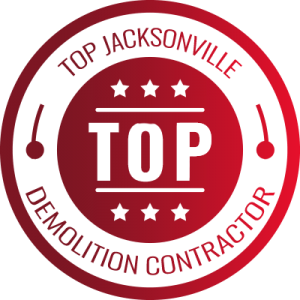



Asbestos, a common material in older buildings, presents significant challenges in commercial demolition projects across Southeast Georgia. Known for its durability and heat resistance, asbestos was widely used in construction before its health risks became clear. Today, it is crucial to address these risks during demolition to protect workers and the environment.
Identifying asbestos in buildings slated for demolition is a critical first step. This material can be hidden in insulation, tiles, and roofing. Discovering asbestos early allows for safe and efficient planning in removing it, ensuring the demolition process goes smoothly and avoids potential health hazards.
Proper handling and disposal of asbestos require expert knowledge and compliance with regulations. Strict guidelines govern how asbestos is managed, underscoring the need for skilled professionals to handle abatement. With the right approach, demolition projects can proceed safely, minimizing risks and staying within legal boundaries.
Identifying Asbestos in Commercial Buildings
Asbestos is found in many areas of older commercial buildings, making its identification a crucial step in the demolition process. This material was often used due to its fire-resistant and insulating properties, which means it can be hidden in several structural components. Common areas to check for asbestos include:
– Insulation: Asbestos was widely used in pipe, duct, and boiler insulation due to its thermal resistance.
– Flooring: Many vinyl tiles and linoleum floors contain asbestos.
– Roofing and Siding: Asbestos is present in some roofing shingles and siding materials.
– Ceiling and Wall Panels: Decorative panels and spray-on textures might contain asbestos.
To identify asbestos in these areas, a thorough inspection is necessary before beginning demolition. This inspection typically involves collecting samples from any suspect materials. Using specialized tools, trained professionals carefully obtain these samples to prevent disturbance, which can release asbestos fibers into the air. These samples are then analyzed in a certified laboratory to confirm the presence of asbestos.
Conducting these inspections early in the project timeline is essential. It allows for better planning and coordination with asbestos abatement experts. It also ensures that any asbestos found is dealt with safely, reducing the risk of exposure to workers and the surrounding environment.
Safe Asbestos Removal Practices
Once asbestos has been found in a building slated for demolition, safe removal becomes the priority. The removal process must be handled with care to avoid releasing harmful fibers. Here are the key steps in asbestos removal:
1. Containment: The area where asbestos is located is sealed off using plastic sheeting and negative air pressure to prevent fibers from spreading.
2. Protective Gear: Workers wear special suits, gloves, and respirators to shield themselves from exposure.
3. Wet Removal: Asbestos materials are wetted to minimize dust. This step helps contain fibers during the actual removal.
4. Careful Removal: Asbestos-containing materials are meticulously removed by hand to avoid breakage and dust creation.
5. Secure Disposal: Removed asbestos is placed in double-sealed, labeled bags for transport to an approved disposal site.
Using certified professionals for asbestos abatement is essential. These experts have the training and equipment needed to handle asbestos safely. They ensure all legal protocols are followed, protecting both the demolition crew and the environment. Proper removal not only meets regulatory standards but also significantly reduces health risks associated with asbestos exposure. This thorough approach is critical to maintaining safety during commercial demolition projects.
Regulatory Compliance and Guidelines
Handling asbestos during demolition requires strict adherence to both local and federal regulations. These laws are in place to protect the health of workers and the general public. In Southeast Georgia, like the rest of the United States, following the guidelines set by the Occupational Safety and Health Administration (OSHA) and the Environmental Protection Agency (EPA) is non-negotiable.
OSHA has detailed standards regarding permissible exposure limits, proper use of protective equipment, and mandatory training for workers handling asbestos. The EPA outlines the protocols for asbestos waste disposal, ensuring that hazardous materials do not contaminate the environment. Compliance with these regulations involves meticulous documentation and reporting to ensure that every step of asbestos removal meets the required standards.
These guidelines are essential not just for legal compliance but for maintaining safety standards. Abiding by these rules helps mitigate the risk of asbestos exposure, which can have severe health implications. Therefore, understanding and following these regulations is pivotal for anyone involved in asbestos abatement or demolition projects.
Minimizing Health Risks During Demolition
Asbestos exposure poses serious health risks, including lung diseases and cancer. Protecting workers and the public from these hazards is a top priority during demolition. Effective safety measures must be in place whenever there is a potential for encountering asbestos.
Key strategies to minimize health risks include:
– Training: Ensure all workers are trained to recognize asbestos and follow safety procedures.
– Monitoring Air Quality: Use air monitoring equipment to detect any asbestos fibers during demolition.
– Health Surveillance: Regular medical check-ups for workers handling asbestos to catch any early signs of health issues.
Implementing these practices helps create a safer work environment. Additionally, using well-maintained equipment and ensuring appropriate ventilation during demolition can significantly reduce risk. Open communication with all team members about safety protocols is essential. Everyone involved must be aware of the risks and know the procedures for dealing with potential asbestos exposure.
Conclusion
Addressing asbestos challenges in commercial demolition involves a careful balance of identification, safe removal practices, compliance, and risk minimization. By focusing on these areas, demolition projects in Southeast Georgia can proceed smoothly, protecting the well-being of all involved and the environment. Following strict regulations and maintaining a high standard of safety ensures that asbestos is handled effectively.
If you’re facing asbestos challenges in your demolition project, let Elev8 Demolition be your trusted partner. Our expertise ensures that all safety measures are in place, and compliance with regulations is guaranteed. Reach out to us today for commercial demolition services.

